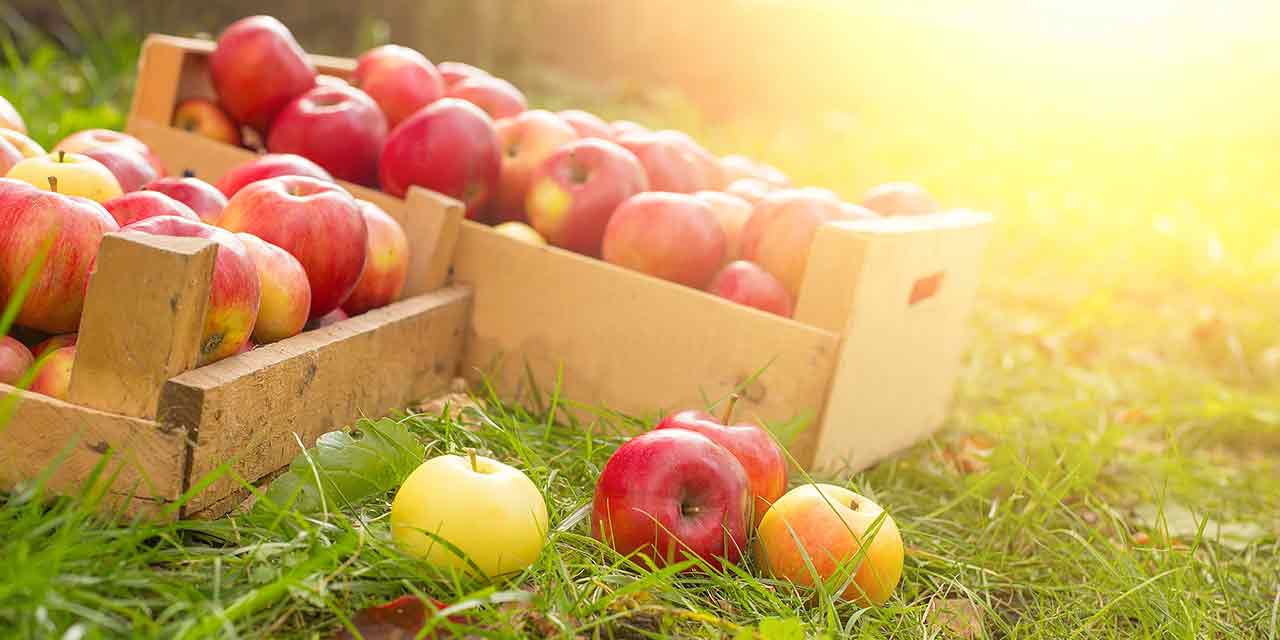
Halloween as a healthy holiday
By Noelle Harada, Contributing Columnist
Featured image courtesy of 3guysfrombrooklyn.com
Apples and pumpkins are synonymous with the sugary drinks and pies of fall. However, these foods are greater than their sugary counterparts; they are nutrient-dense, and should represent healthy seasonal eats. October is the prime harvest season for apples and pumpkins, and it signifies National Pumpkin and National Apple Month. This season, nourish your body by enjoying these fall favorites outside of their typical desserts.
Thanks to modern innovations, apples can be purchased and enjoyed year-round. However, apples are the cheapest, freshest and sweetest during the autumn months. Apples are the perfect grab-and-go snack for busy college students. One medium sized apple is less than 100 calories, contains no fat, no sodium and no cholesterol. One apple also contains about four grams of fiber, which accounts for 10 to 20 percent of the daily recommended value. Fiber is important for digestion, blood sugar regulation and heart health. Fiber is also important for regulating hunger, so snacking on an apple may prevent overeating and aid with weight loss/management. Apple skins contain antioxidants with anti-inflammatory properties that can help prevent diseases like stroke, heart disease and cardiovascular disease.
The characteristics of apples also benefit the teeth. According to the American Dental Association (ADA), it is a common misconception that all sugary fruits increase the risk for tooth decay. In reality, the high water content and texture of apples benefit dental health. Crunching on a fibrous apple stimulates the gums and promotes saliva production in the mouth. This rinses away food particles and bacteria that promote tooth decay.
There are many ways to enjoy apples this season. Apples can be enjoyed raw and whole, dipped in peanut butter, added to oatmeal or sprinkled with cinnamon. With a little more energy, apples can easily transform into homemade applesauce or dried apple chips. They can be added to a salad for a sweet crunch, or used to brighten up coleslaw. Apples pair well with cheddar cheese, so try adding them to a quesadilla or grilled cheese for a tasty fall twist.
According to the University of Illinois, over 800 million pumpkins are ripe for picking in October; this means that about 80 percent of the United States’ pumpkin crop is harvested during this single month. Although pumpkins are abundant in October, canned pumpkin is available throughout the year. Pumpkins are low in calories and high in nutritional value. One cup of pumpkin contains about 30 calories, no saturated fat, and is rich in fiber, vitamins and minerals. Pumpkin is particularly rich in potassium, vitamin A, vitamin C, vitamin E and beta-carotene; beta-carotene is an antioxidant that is converted into vitamin A in the body. Vitamin A is essential for healthy skin, strong eyesight, and the immune system. A serving of pumpkin also contains about 11 percent of the daily recommended amount of potassium (more than a small banana); this mineral has a positive effect on blood pressure, and keeps the heart and muscles working properly. The potassium and the high water content in pumpkins (pumpkins are about 90 percent water) help your body restore electrolytes; this makes it a great post-workout snack option.
Although pumpkins are known for their orange meat, every single part of a pumpkin is edible; this includes the skin, pulp, seeds and stem. Pumpkin seeds are often roasted for a quick snack or a crunchy addition to salads. Pumpkin seeds are rich in protein, heart healthy unsaturated fats, fiber, antioxidants and an amino acid called tryptophan. Tryptophan helps produce serotonin in the brain to lift your mood, promote sleep and reduce anxiety.
When you’re making jack-o-lanterns this season, be sure to buy an extra pumpkin to cook and eat. If the thought of roasting pumpkin is intimidating, then canned pumpkin is a great option. Canned pumpkin contains the same nutritional benefits as its fresh counterpart. When buying canned pumpkin puree, be aware that “pumpkin pie filling” is not the same thing; pumpkin pie filling is premixed with added sugar. Pumpkin puree can be substituted for oil/butter in any baking recipe, it can be mixed with Greek yogurt and cinnamon for a creamy treat, transformed into hot pumpkin soup, or blended into a fall inspired smoothie. Roasted pumpkin chunks can be added to vegetable medley or stirred into pasta. Pies and lattes may be delicious fall treats, but as the holidays approach, be sure to balance out the sweets with more nutrient-dense recipes.

